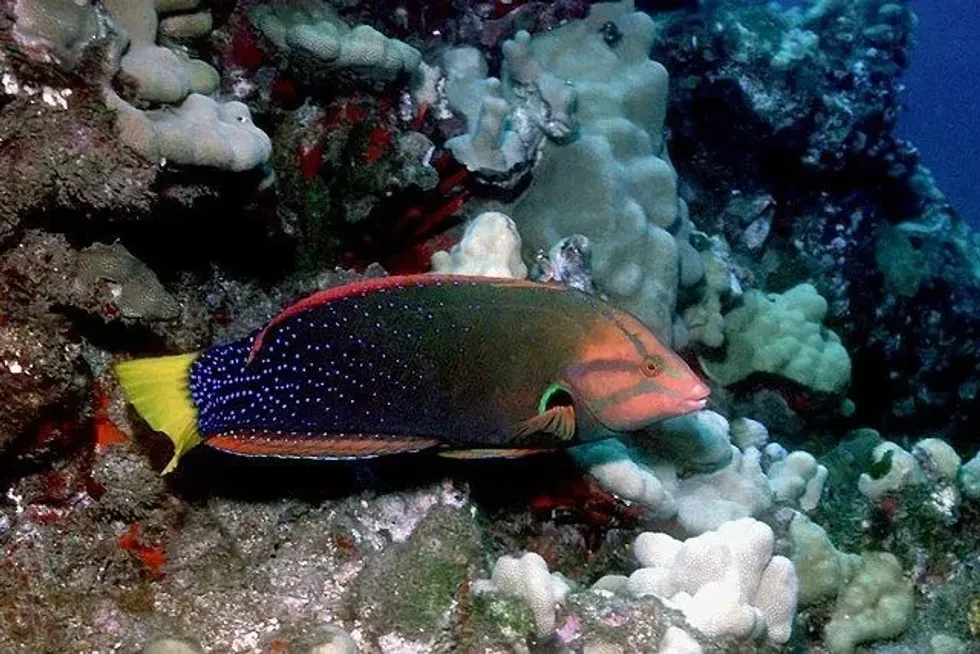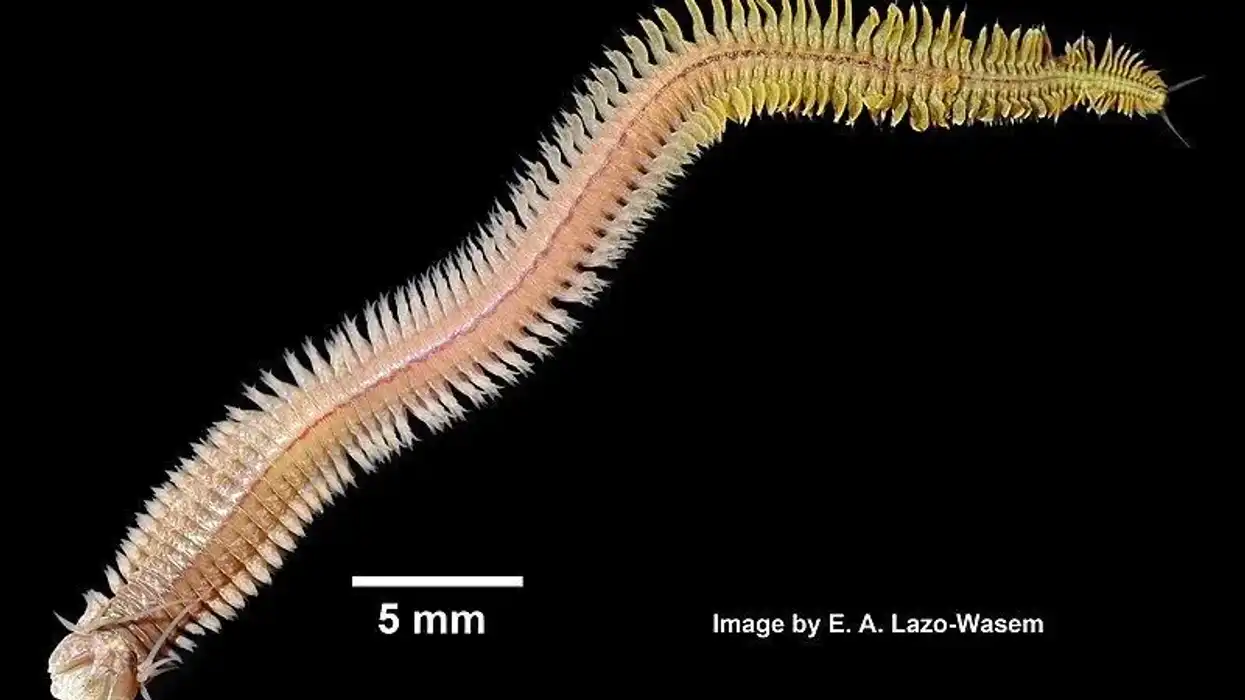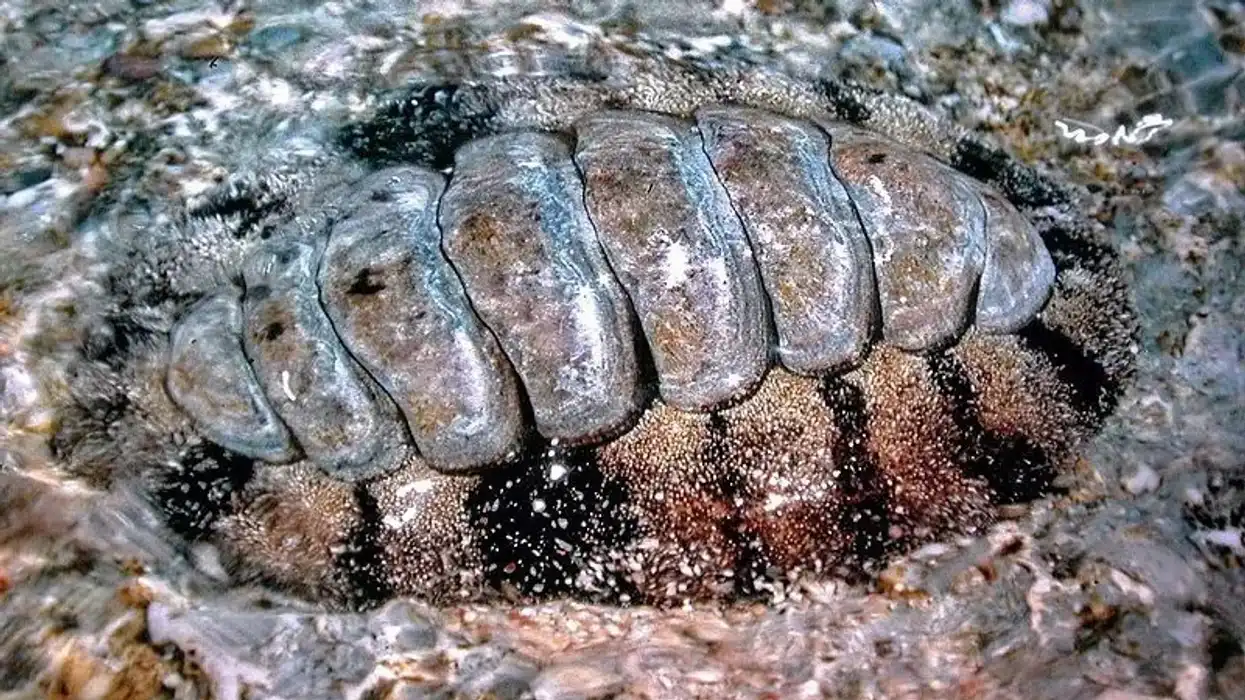The clown wrasse (Coris gaimard) is known by multiple names, namely, yellowtail coris, red coris wrasse, red labrid, and gaimard's wrasse. Since there are so many colors associated with their name, people often find themselves asking what the clown wrasse's true color is.
Well, it is actually both red and yellow! When young, they are bright red in color and have black-rimmed white specks.
As adults, they sport various different colors like orange, red, green, and blue. And there also exists a difference between the colors of an adult male and female clown wrasse. Wrasses can be found in abundance living in their marine habitat: coral reefs of the Hawaiian Islands, Fiji, the Indo-pacific, and the Red Sea.
They are carnivorous fishes who search the reef bed for small invertebrates like hermit crabs, snails, shrimps, and sea urchins. To know more about the yellowtail coris keep reading.
If you want to keep learning, do check out some interesting facts and information about the yellowfin flasher wrasse and the Ballan wrasse.
Clown Wrasse Interesting Facts
What type of animal is a clown wrasse?
The clown wrasse or coris wrasse is a species of fish. Its scientific name is Coris gaimard. The colorful fish belongs to the family Labridae and genus Coris.
What class of animal does a clown wrasse belong to?
The coris wrasse belongs to the Actinopterygii class of animals.
How many clown wrasses are there in the world?
An accurate estimate of the number of mature clown wrasses is currently unavailable. But the species is fairly common in southeast Asia and the central Pacific. The fish can be spotted at almost every reef in the Hawaiian islands, the Red sea, Fiji, and the Indo-pacific. The population trend of the coris wrasse suggests that their numbers are stable.
Where does a clown wrasse live?
The clown wrasse is a common fish in southeast Asia and the central Pacific. The fish can be found in various reefs of Hawaii, Fiji, Indo-pacific, and the Red Sea. They also occur in Japan and Australia.
What is a clown wrasse's habitat?
The red coris wrasse has made a home for itself in the tropical and subtropical oceans. Their choice of marine habitat is the reef.
Reefs are rock, sand, or coral formations that are found below the surface of natural water bodies like the sea or ocean. The clown wrasse can be spotted even at a depth of 164 ft (50 m).
Who do clown wrasses live with?
The coris wrasse, also known as the yellowtail coris, only move together in groups or shoals when they are young or juvenile. As they mature, they choose to lead private lives and thus proceed to separate themselves from their previously formed group.
The adult Coris gaimard is so fond of a solitary life that they may even become hostile if new fishes enter their territory.
How long does a clown wrasse live?
The yellowtail coris has an average life expectancy of ten years. But their longevity decreases in captivity. Even if the fish is cared for and tended to, it will not usually survive for more than five to seven years.
How do they reproduce?
As adults, the species find mating partners and the female Coris gaimard lays her eggs in a nest. The clown wrasse species has a history of undergoing a sex change.
It is usually the female fish that goes through this process to fill in the shoes of a male figure in the family. The reversal of sex brings about a change in the reproductive organs and color pattern in the fish.
What is their conservation status?
The conservation status of the coris wrasse is evaluated as Least Concern by the International Union for Conservation of Nature.
Clown Wrasse Fun Facts
What do clown wrasses look like?
Young yellowtail coris is a tiny, bright red fish with a spindle-shaped body. It is often called a tomato wrasse for its vibrant red shade. The species has a pointed snout.
Portly lips cover its two prominent canine teeth. Juveniles are etched with black-rimmed white spots and they develop new color patterns as they mature into adults. Males and females have different colorations on their body, which makes identifying them simple. Mature females are orange, with blue spots and a red fringe.
Males are marked with a dark green bar behind the gill. Dark gray bands run along with their fins and more blue specks cover their body. Adults of both sexes are gifted with a vibrant yellowtail.
 *Please note that this image is of a yellowtail coris, not a clown wrasse. If you have an image of a clown wrasse, please let us know at hello@kidadl.com
*Please note that this image is of a yellowtail coris, not a clown wrasse. If you have an image of a clown wrasse, please let us know at hello@kidadl.com
How cute are they?
Clown wrasse is a captivating fish thanks to its unique coloration. Juveniles, males, and females all flaunt different color patterns. The juvenile is tiny with black-rimmed white spots, females are orange and males exhibit dark green and gray colors on their bodies. Their distinct hues and bright tinges make them a must-have in any aquarium.
How do they communicate?
Red coris wrasse uses silent mechanisms to communicate with one another. They perform different gestures and bodily movements to catch the attention of other fishes. They may tilt their head or move their body from side to side to send messages.
How big is a clown wrasse?
The red coris wrasse is small in size. They have a length of 14-16 in (36-41 cm) on average. They are smaller than a humphead wrasse which is 6 ft (1.8 m) in length.
How fast can a clown wrasse swim?
As opposed to the members of the family Labridae, the yellowtail coris has a tapered body shape that helps it swim deftly deep underwater. They specifically use their dorsal fin and pectoral fins for swimming.
They typically perform up and down or "flying" motions to swim. When kept in a tank or aquarium they can be seen splashing around the surface.
How much does a clown wrasse weigh?
An accurate estimate of the weight of the coris wrasse is unavailable. However, its miniature size suggests that the fish is rather lightweight.
What are the male and female names of the species?
No specific name has been assigned to the male and female adult clown wrasse. They are simply referred to as male clown wrasse and female clown wrasse.
What would you call a baby clown wrasse?
Young or baby coris wrasse does not have any particular name. They are usually referred to as juvenile or fledgling clown wrasses.
What do they eat?
The red coris wrasse is an efficient carnivore. They typically feed on snails, shrimps, mollusks, hermit crabs, and sea urchins. If the fish is kept in an aquarium they can learn to survive on various kinds of fresh and frozen seafood. Formulas and flake food may also be consumed by the fish.
Are they dangerous?
Yellowtail coris is semi-aggressive by nature but their violent streak only comes to light with members of its own species. Therefore, it is often advised to keep only one singular fish or a mated pair in an aquarium.
They are, however, not dangerous to other fishes. Other species like Hawkfish, Clownfish, or Rabbitfish can live in harmony with the clown wrasse red.
Would they make a good pet?
Clown wrasse fish makes for an ideal pet especially if you want to add a pop of color to your aquarium. Juvenile fishes are usually bought by owners once they have grown up to a certain degree since baby fishes need time to acclimatize in tanks. Yellowtail wrasses need a lot of care and attention to prosper in captivity.
Did you know...
Clown wrasse is not exactly a reef-safe fish. The species will search the coral reef bed for invertebrates and pluck out all the shrimps, mollusks, and worms they can find to devour.
They are native to the Indian ocean.
Wrasses have a habit of burying themselves in the sand at night available on the coral reefs. So don't be surprised if they want to do the same in your tank. It is imperative to build a sand bed in your aquarium for your wrasse or they might just get hurt while trying to bury themselves when night falls.
Are wrasses aggressive?
Wrasses are non-aggressive as juveniles but they certainly do become more hostile as they grow into adults. The Coris gaimard is known to be a semi-aggressive fish but only with its own species. They do, however, make good tankmates for fishes like clownfish, angelfish, boxfish, and more.
Do all wrasse eat shrimp?
Shrimp happens to be a favorite among the species since they have an affinity for meaty food. If you want to include shrimp in their diet you may give them peppermint shrimp, brine shrimp, or mysid shrimp.
Here at Kidadl, we have carefully created lots of interesting family-friendly animal facts for everyone to discover! For more relatable content, check out these longnose hawkfish facts and longear sunfish facts pages.
You can even occupy yourself at home by coloring in one of our free printable tropical fish coloring pages.
Main image by laszlo-photo and second image by Rickard Zerpe.




 *Please note that this image is of a yellowtail coris, not a clown wrasse. If you have an image of a clown wrasse, please let us know at hello@kidadl.com
*Please note that this image is of a yellowtail coris, not a clown wrasse. If you have an image of a clown wrasse, please let us know at hello@kidadl.com




